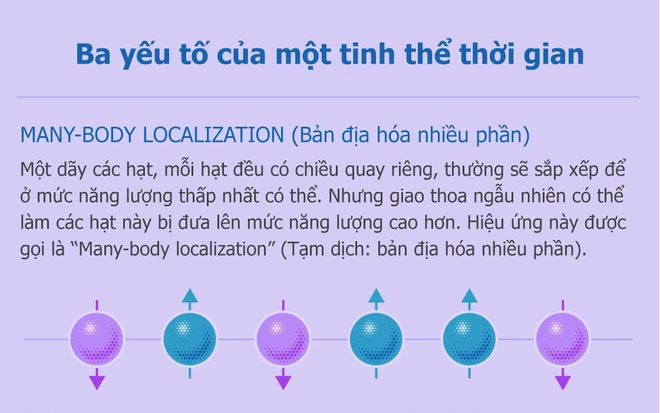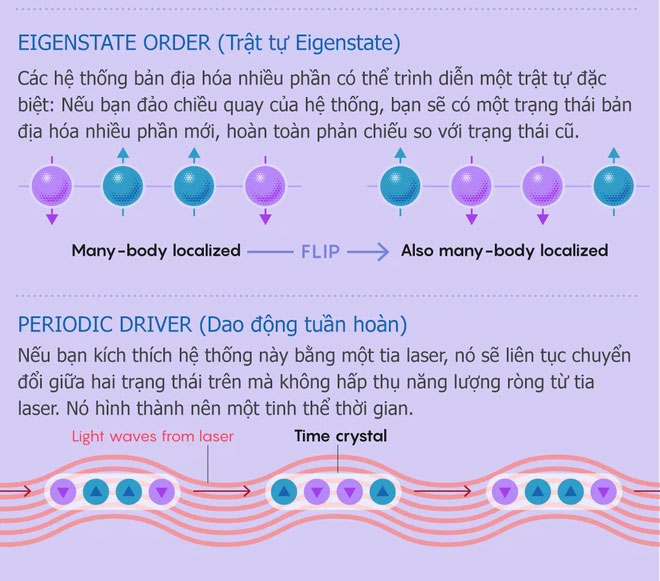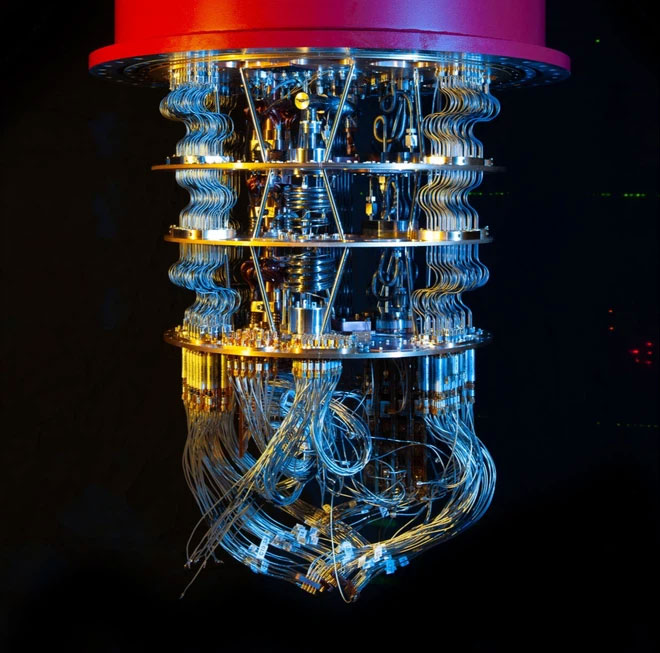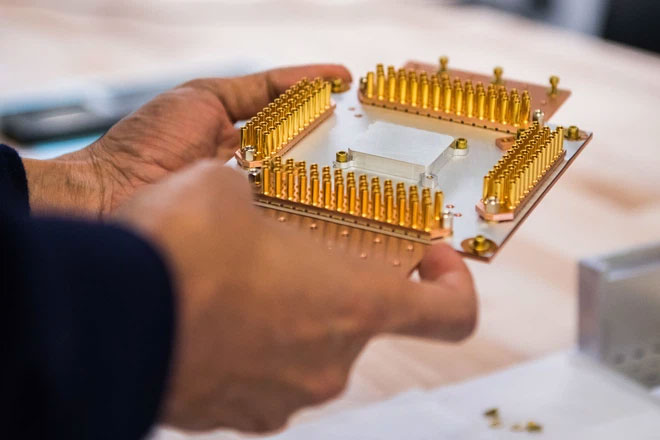But don’t hope that this breakthrough will help you create a time machine in the future.
According to a newly published study, Google’s quantum computer has just achieved an unprecedented breakthrough by creating a “time crystal”, a theoretical concept of a form of matter. Despite its name, a time crystal does not actually allow you to create a time machine; instead, it may pave the way for the development of more stable, reliable, and useful quantum computers for humanity.
What is a Time Crystal?
The theory of time crystals was proposed in 2012 by scientist Frank Wilczek. If natural crystals – such as diamonds – are formed from a lattice of atoms bonded together in a periodically varying spatial arrangement, repeating in the crystal structure.
From this, Wilczek envisioned an object consisting of many parts coexisting in a state of equilibrium, similar to a diamond. However, when this object breaks the time-translation symmetry, it undergoes periodic motions and returns to its original structure at regular intervals. More importantly, this object moves even in its lowest energy state.

Time crystals do not actually help you create a time machine.
This means that even in its ground state – where no energy appears, this object still exhibits motion by continuously aligning the atoms within it and repeating in a cyclic manner. That is the reason for the name Wilczek gave it: Time Crystal.
The property that sounds like a perpetual motion engine has led scientists to disagree on whether such an object can actually exist, as it contradicts the usual rules of thermodynamics. Since the theory was proposed, many studies have attempted to create time crystals at various levels but have all been unsuccessful.
Achieving the Impossible
However, in a newly published study, scientists at Google, along with physicists from Princeton University, Stanford, and several other universities, have announced that Google’s quantum computer has accomplished what many believed to be impossible.
According to an explanation from Quanta Magazine, a time crystal essentially consists of a combination of three core elements.
- First is a sequence of particles with spins oriented in a specific direction. For example, four particles arranged in the order of spin up, spin down, spin down, and spin up at a low energy level. However, a random intervention can elevate these particles to a higher energy level. This is known as the “many-body localization” state.


- Second is the reversal of the spins of all these particles – essentially creating a mirrored version of itself – also known as the Eigenstate order. This creates a secondary many-body localization state.
- Finally, is the application of lasers. The laser beam will create continuous transitions between these states – from normal to the reflected state and then back to normal – without depleting net energy from the laser beam. This is also known as a Floquet time crystal, first proposed in 2016.
Meanwhile, Google’s quantum computer, named Sycamore, is equipped with a 20-qubit quantum chip, also known as controllable quantum particles – each quantum particle can maintain two states, 0 and 1, simultaneously. By fine-tuning the interaction levels between individual qubits, researchers can randomize these interactions and create many many-body localization states. Then, the energy from the laser brings these particles into their own reflected state without changing the spin of the particles.

Google’s quantum processor with external cryogenic devices.
Google’s qubits also include superconducting aluminum strips. Each strip has two energy states, programmed to represent the spin up or spin down of each qubit. Thanks to the ability to customize the interaction levels between qubits in Google’s Sycamore quantum computer, researchers were able to transform it into a time crystal.
Programmers can randomize the intensity of interaction between qubits, and this randomization has created destructive collisions between qubits, allowing for the formation of a sequence of qubits with specific spins – similar to the first element of the time crystal: the many-body localization state.
From this sequence of qubits with unique spins, researchers created different arrangements based on their spins, such as up, down, down, up, and so on. They then used microwave pulses to reverse the spins of these qubits and create mirrored versions of them.
By running experiments tens of thousands of times with each different arrangement and measuring the states of the qubits after running for different lengths of time, researchers could observe that the spin configuration of the entire system continuously alternated between two many-body localization states.

Google’s quantum processor.
The signature of this phase occurs extremely stably. The spin configuration of the entire system remains intact even when the microwave pulses change. Researchers found that the microwave pulses not only reversed the spins of the qubits and brought them back to normal state after two pulses, but this state change also did not absorb or dissipate energy from the microwave laser pulse, keeping the system’s disturbance unchanged.
What Does This Mean?
In fact, this is not the first time a Floquet time crystal has been created. On July 5, a research team at Delft University of Technology in the Netherlands created a Floquet time crystal using the spins of carbon atoms in diamonds, rather than qubits in the quantum processor. However, Delft’s system is smaller and more limited compared to the time crystal in Google’s quantum processor.
The practical application of this Floquet time crystal is still unclear, but according to a theory by researcher Normal Yao, the stability of this system promises to create an almost perfect memory for quantum computers.
Because the quantum state of the quantum processor is particularly susceptible to disruptions from external fluctuations, the time crystals, on the other hand, have the ability to maintain their configuration even amidst changes in microwave pulse oscillations. However, this remains merely a theory, and there is nothing completely certain about it yet. Therefore, creating a stable time crystal from Google’s quantum computer will pave the way for discovering its practical applications in the future.





















































